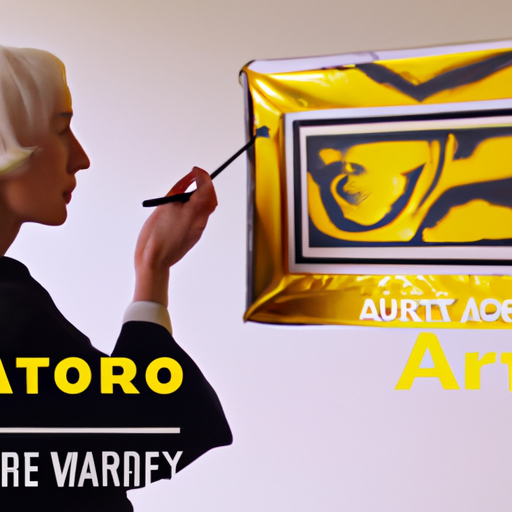-
Table of Contents
Artful Branding: How Art Can Define a Company’s Identity
Art has always been a powerful medium for self-expression and communication. It has the ability to evoke emotions, convey messages, and leave a lasting impact on its audience. In recent years, businesses have recognized the potential of art in shaping their brand identity. By incorporating art into their branding strategies, companies can differentiate themselves from competitors, create a unique brand image, and connect with their target audience on a deeper level. In this article, we will explore the concept of artful branding and how it can define a company’s identity.
The Power of Visual Communication
Visual communication plays a crucial role in branding. It is estimated that 90% of the information transmitted to the brain is visual, making it a highly effective way to capture attention and convey messages. Art, with its ability to communicate complex ideas and emotions through visual elements, offers a unique advantage in the branding landscape.
Art can help companies tell their story, express their values, and communicate their brand personality. It allows businesses to go beyond words and create a visual language that resonates with their target audience. By leveraging art in their branding efforts, companies can create a memorable and impactful brand identity.
Creating a Memorable Brand Identity
A strong brand identity is essential for businesses to stand out in today’s competitive market. Art can play a significant role in creating a memorable brand identity that captures the essence of a company. Let’s explore some ways in which art can define a company’s identity:
- Logo Design: A company’s logo is often the first point of contact with its audience. Artistic elements in logo design can help convey the brand’s personality, values, and unique selling proposition. For example, the iconic Apple logo is a simple yet powerful representation of the brand’s innovative and sleek image.
- Visual Branding: Art can be used to create a consistent visual language across various brand touchpoints, such as websites, packaging, and advertisements. This visual consistency helps reinforce the brand identity and makes it easily recognizable. The vibrant and playful illustrations used by Dropbox are a great example of how art can define a brand’s visual identity.
- Branded Spaces: Art can transform physical spaces into immersive brand experiences. Companies like Google and Facebook have embraced art in their office spaces, using murals, sculptures, and installations to reflect their brand values and create a unique work environment.
Connecting with the Target Audience
Art has the power to evoke emotions and create a connection with the audience. By incorporating art into their branding, companies can tap into the emotional aspect of their target audience and establish a deeper connection. Here’s how art can help companies connect with their target audience:
- Storytelling: Art can be used to tell compelling stories that resonate with the target audience. By visually representing the brand’s narrative, companies can engage their audience on a deeper level. The “Share a Coke” campaign by Coca-Cola, which featured personalized labels with people’s names, used art to create a sense of personal connection and storytelling.
- Emotional Appeal: Art has the ability to evoke emotions and create a memorable experience. By incorporating art in their branding, companies can tap into the emotional aspect of their audience and create a lasting impression. The emotional and thought-provoking advertisements by Nike, featuring athletes and their inspiring stories, are a testament to the power of art in creating emotional connections.
- Cultural Relevance: Art can also help companies connect with their target audience by reflecting their culture and values. By incorporating local art forms or collaborating with local artists, companies can show their commitment to the community and establish a sense of authenticity. The partnership between Starbucks and local artists in different cities to create unique store designs is a great example of how art can create cultural relevance.
Case Studies: Artful Branding in Action
Let’s take a look at some real-world examples of companies that have successfully used art to define their brand identity:
Red Bull
Red Bull, the energy drink company, has built its brand identity around extreme sports and adventure. The company sponsors and organizes various sporting events, and their branding heavily features art and illustrations that reflect the adrenaline-fueled lifestyle they promote. By associating their brand with art and adventure, Red Bull has created a unique and memorable brand identity that resonates with their target audience.
Chobani
Chobani, the Greek yogurt company, has embraced art in its branding efforts. The company collaborated with artists to create limited-edition packaging designs that feature vibrant and eye-catching illustrations. This artistic approach not only sets Chobani apart from its competitors but also creates a sense of excitement and collectability among consumers. By incorporating art into their packaging, Chobani has successfully defined its brand identity as a creative and innovative food company.
Conclusion
Artful branding offers companies a unique opportunity to define their identity and connect with their target audience. By leveraging art in their branding strategies, companies can create a memorable brand identity, differentiate themselves from competitors, and establish a deeper emotional connection with their audience. Whether it’s through logo design, visual branding, or immersive brand experiences, art has the power to shape a company’s identity and leave a lasting impact. As businesses continue to recognize the value of art in branding, we can expect to see more innovative and creative approaches to artful branding in the future.
